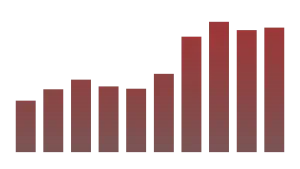| No matching records found | |
The data on United States suicide rates from the years 2000 to 2023 provides a concerning insight into the trends in mental health and societal pressures over more than two decades. These rates are age-adjusted and presented per 100,000 individuals, offering a standardized measure to account for population changes over time.
2000–2005: The early 2000s showed relatively stable suicide rates, hovering around 10.4 to 10.9. This period didn’t see significant fluctuations, suggesting a period of relative stability in this public health metric.
2006–2010: Starting from 2006, there was a gradual increase, with rates rising from 11.0 in 2006 to 12.1 by 2010. This increment marked a concerning upward trend, possibly reflecting the impacts of social and economic factors, including the aftermath of the 2008 financial crisis.
2011–2015: The rates continued to climb in this period, reaching 13.3 by 2015. This steady increase might be indicative of deeper societal issues and highlights the need for enhanced mental health services and support systems.
2016–2020: This period saw a further increase, peaking at 14.2 in 2018, before a slight decrease to 13.5 in 2020. The peak in 2018 could be associated with various factors, including economic stress, social isolation, and other mental health challenges. The slight decrease in 2020 is noteworthy, but it’s important to consider the context of the COVID-19 pandemic and its impact on data collection and mental health.
2021–2023: In 2021, the rate rose to 14.1, followed by 14.2 in 2022, and a slight dip back to 14.1 in 2023. This plateau at a historically high level underscores the persistent challenges to mental health in the U.S., possibly reflecting lingering effects of the pandemic, economic uncertainty, and systemic mental health care gaps.
These trends in suicide rates are a critical indicator of the nation’s mental health and well-being. The gradual increase over the years highlights the need for continued focus on mental health resources, public awareness, and strategies to address the underlying causes contributing to these rates. It’s essential to consider these figures within the broader context of societal, economic, and healthcare factors that influence mental health.





